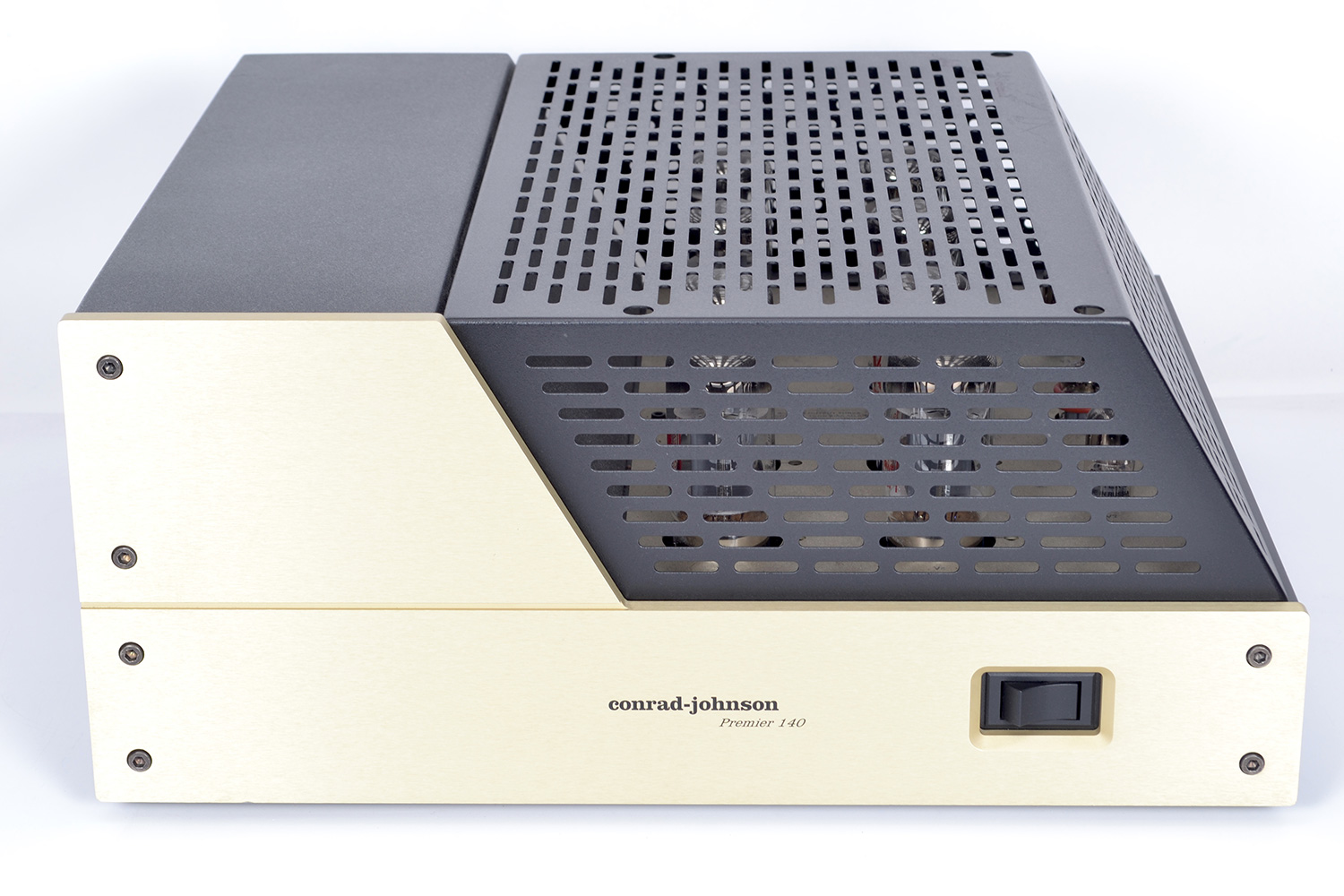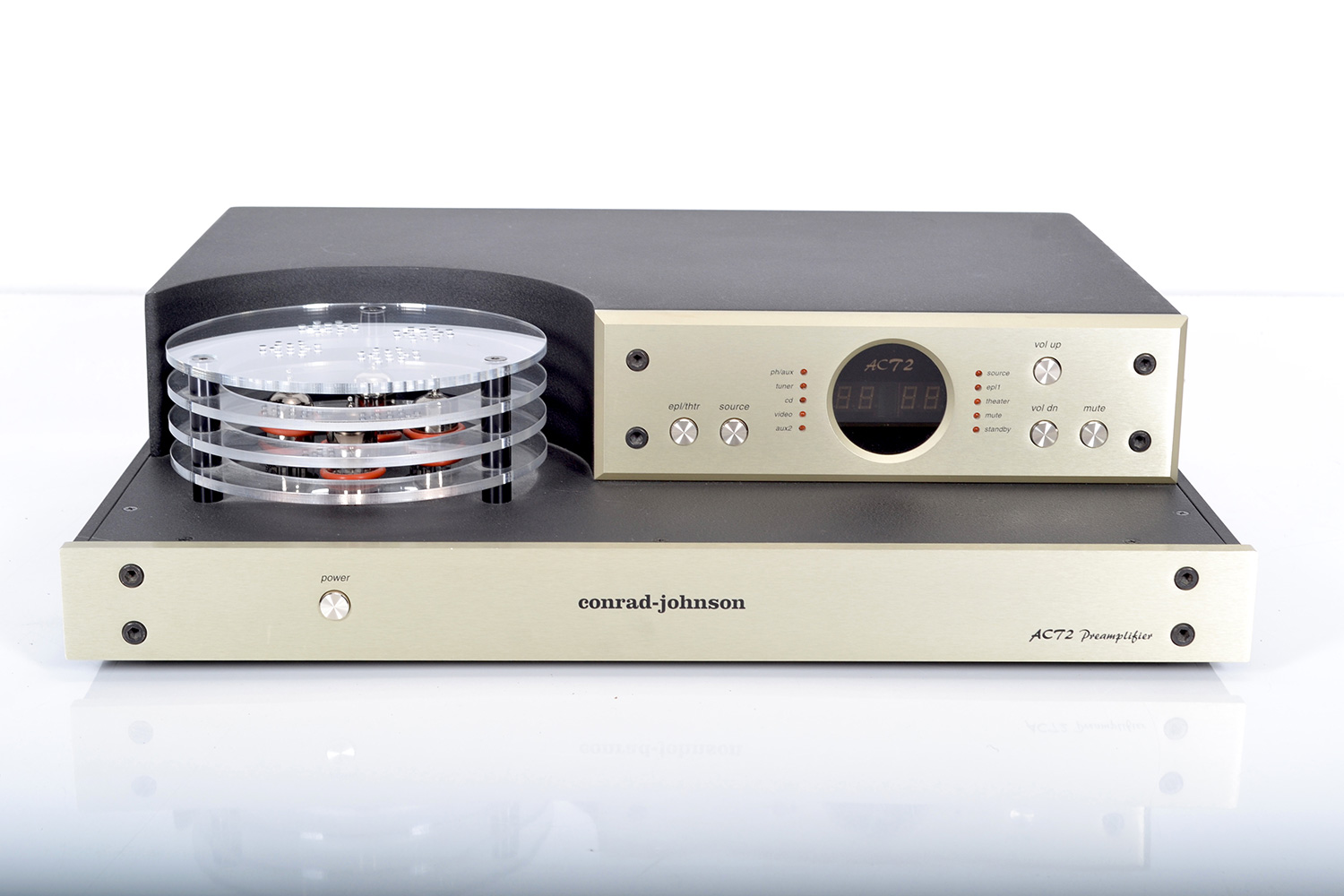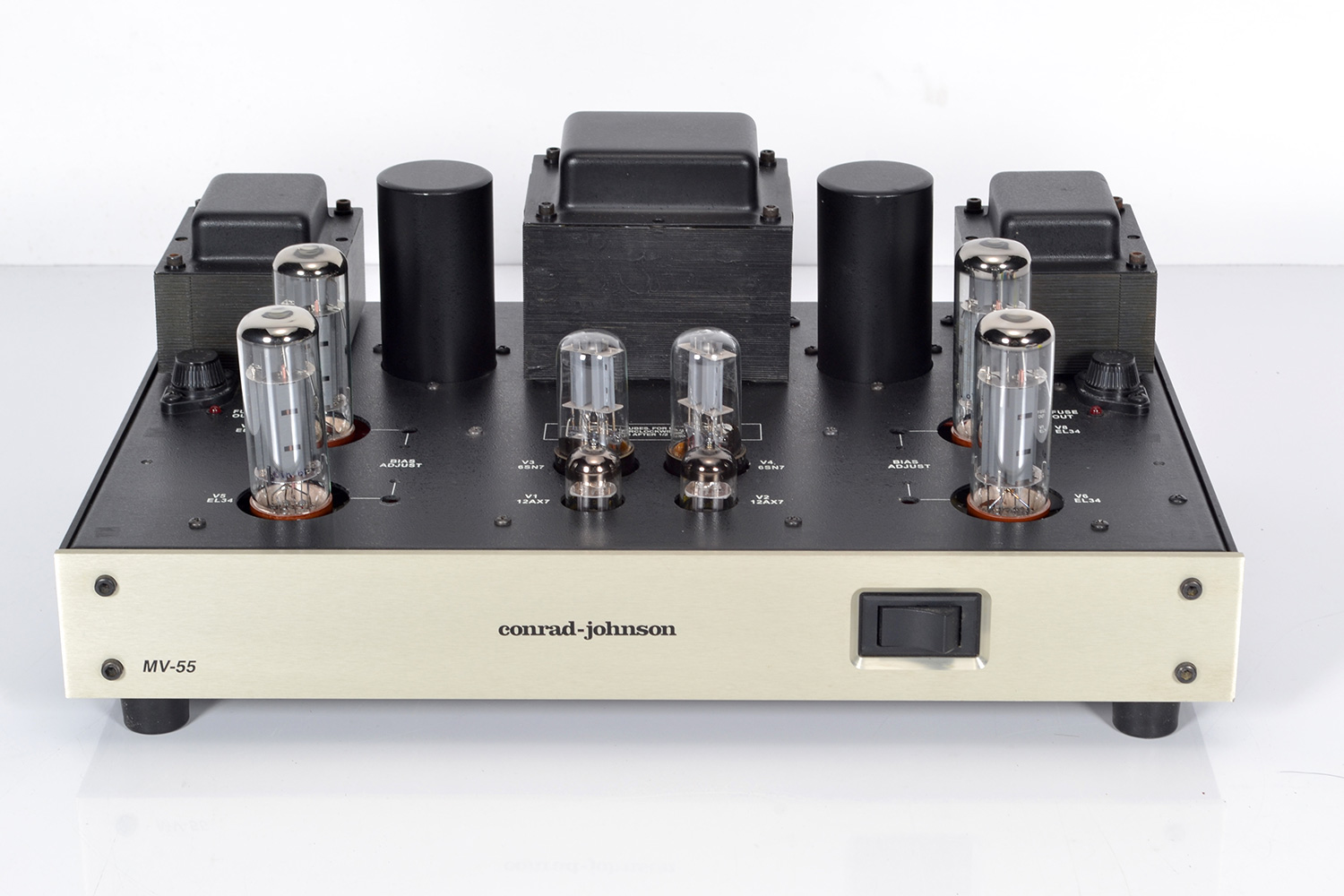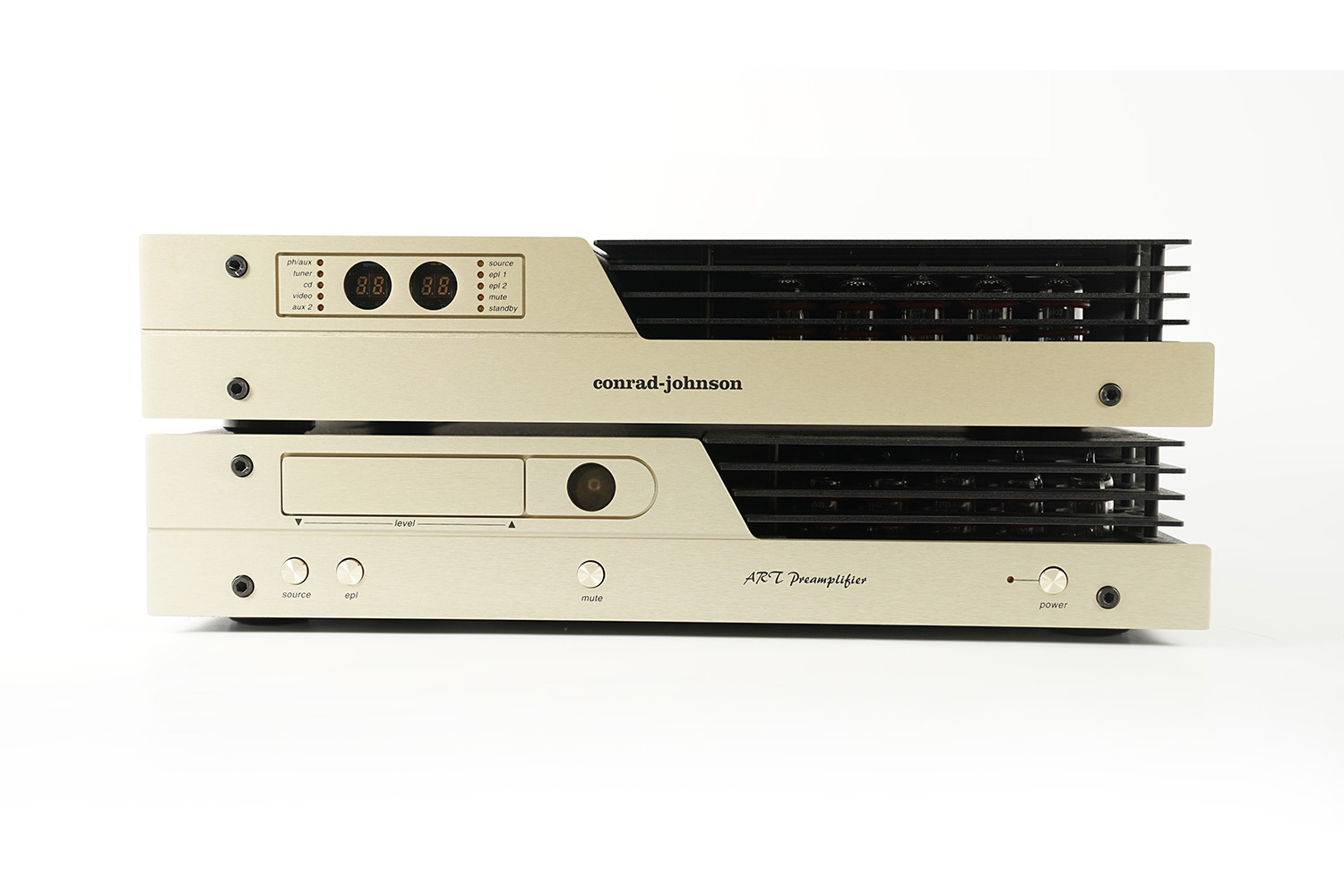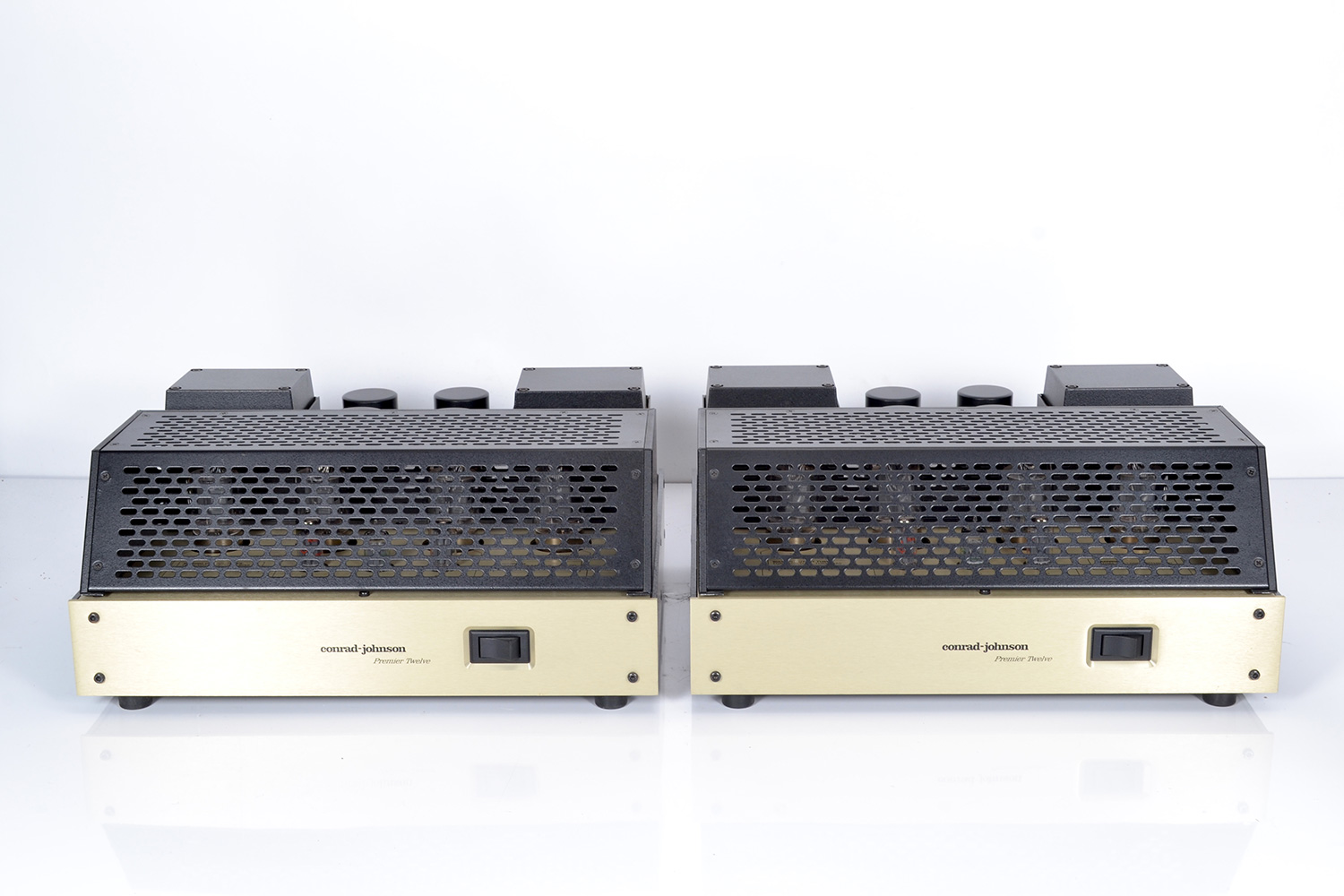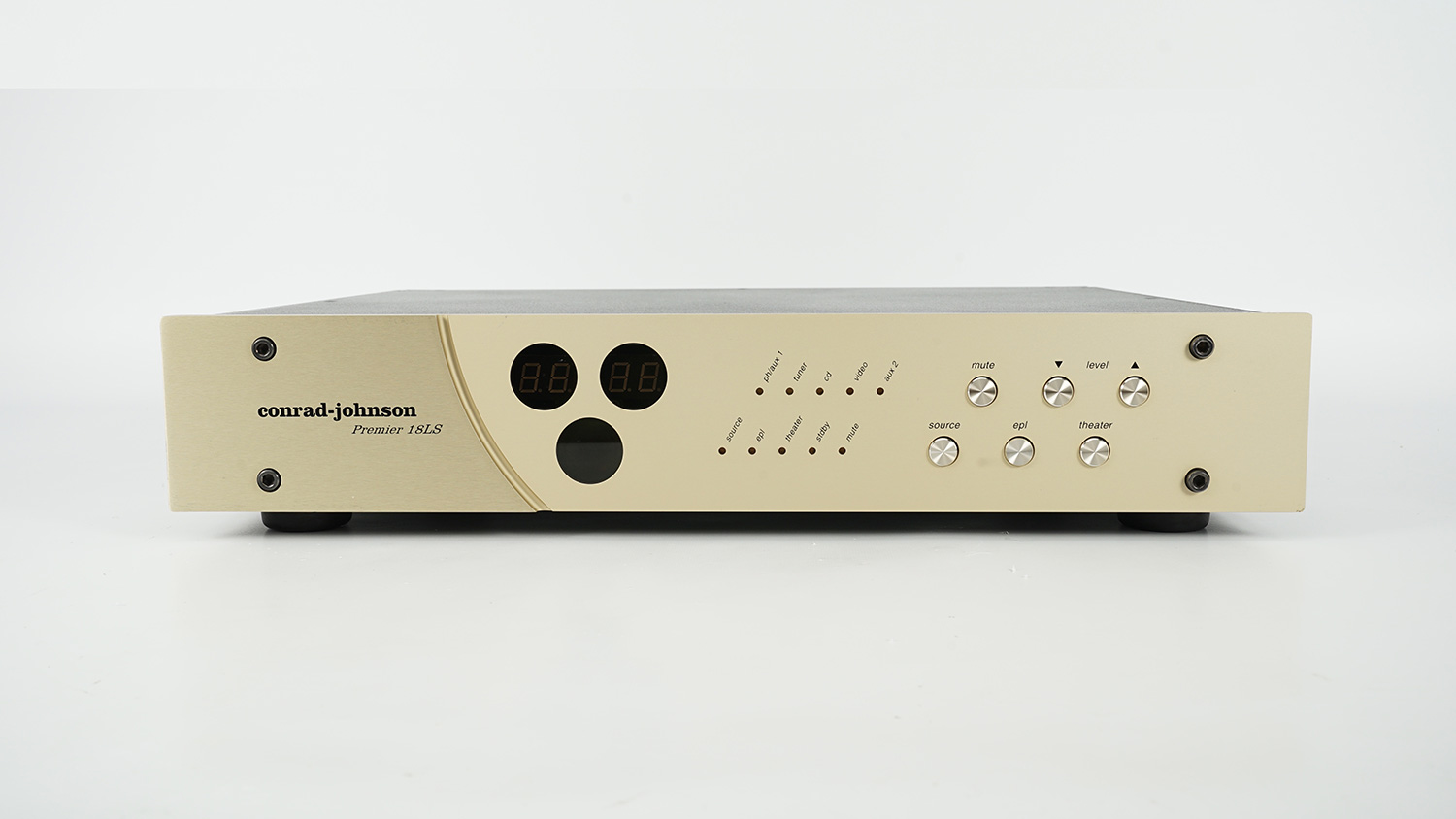
Conrad Johnson is one of the most dependable brand names when it comes to high-end audio systems. For years the brand has been recognized by audiophiles throughout the world as equipment that delivers clear and consistent quality in music.
What are the specs for the Conrad-Johnson Premier 18LS?
- Description:
- Solid-state (FET) preamplifier with remote control, 4 pairs inputs (RCA, unbalanced), 2 pairs outputs (RCA, single-ended), 1 tape loop.
- Maximum voltage gain:
- 22dB.
- Maximum output:
- 9V unbalanced.
- Distortion:
- less than 0.1% at 1V output, IMD or THD.
- Polarity:
- inverted at all outputs.
- Output impedance:
- 200 ohms.
- Bandpass:
- 2Hz-100kHz (no amplitude limits specified).
- Noise:
- ref. 500mV input (20Hz-20kHz), -96dB.
- Dimensions:
- 19" (487mm) W by 3.3" (85mm) H by 15.25" (391mm) D.
- Weight:
- 16 lbs (7.3kg).
What else to know about the Conrad-Johnson Premier 18LS?
"In his solid-state circuits, Lew Johnson uses the same principle of simple, single-ended, single-stage preamplifier design that he'd used in his tube designs. To do this, the Premier 18LS uses field effect transistors (FETs) because they minimize odd-order distortion products. Because these distortions are musically unrelated to the fundamental tone, they sound particularly strident and irritating. On the other hand, a FET's even-order distortion products are part of the natural musical overtones. Simplicity meant limiting the 18LS to only one gain stage. For that reason, the preamp had to be a single-ended device. It has no balanced inputs or outputs, which would require another circuit stage. The single gain stage also means that the 18LS inverts phase. The symmetry of FET drivers made possible a total harmonic distortion (THD) level of just 0.005% THD, which meant no feedback loop was needed. Why is this important? Negative feedback is used to reduce measured distortion. Lew Johnson noted that transistors have much more gain and require much more feedback to manage dynamic passages. Yet circuits with lots of feedback can sound edgy due to transient intermodulation distortion (TIM). "Feedback distorts the time information, so that you lose microdynamics," says Johnson. "These are the fine musical gradations that the best preamplifiers can reveal." Feedback also affects macrodynamics. "The Conrad 18LS handles larger signals without requiring feedback because it can create symmetrical currents using the two types of FETs [N-channel and P-channel—Ed.]." There are two kinds of negative feedback: loop feedback (aka global feedback) and local feedback, the latter found in circuits that use a cathode "follower" circuits, whether they be cathode (tube), FET, or bipolar transistor. Johnson's Premier 16LS and 17LS tube preamplifiers do not employ cathode-follower circuits. Similarly, the solid-state Premier 18LS uses C-J's auto-linear gain block, which achieves low distortion with zero loop feedback by exploiting the symmetrical distortion properties of N- and P-channel FETs. Johnson believes that the design of the power supply is just as important to the quality of the audio signal as that of the signal-bearing circuits. The 18LS's power supplies contain discrete DC regulators carefully designed for minimum impedance even at the highest audio frequencies, to prevent the supplies from distorting the audio signal." - StereophileIf you are interested in selling your used Conrad Johnson equipment to us in the greater NYC area or Colorado, please click here to fill out a Free Quote Form and we will get back to you. If we agree on terms, we come to meet you where you want, and pay cash.
The following images show actual Conrad Johnson equipment purchased by StereoBuyers.
